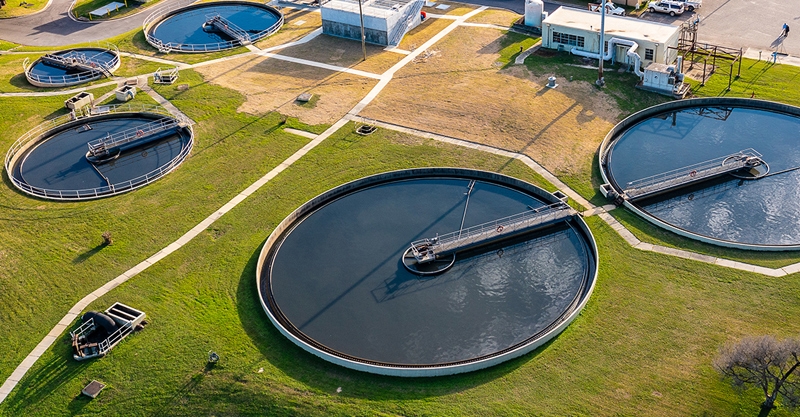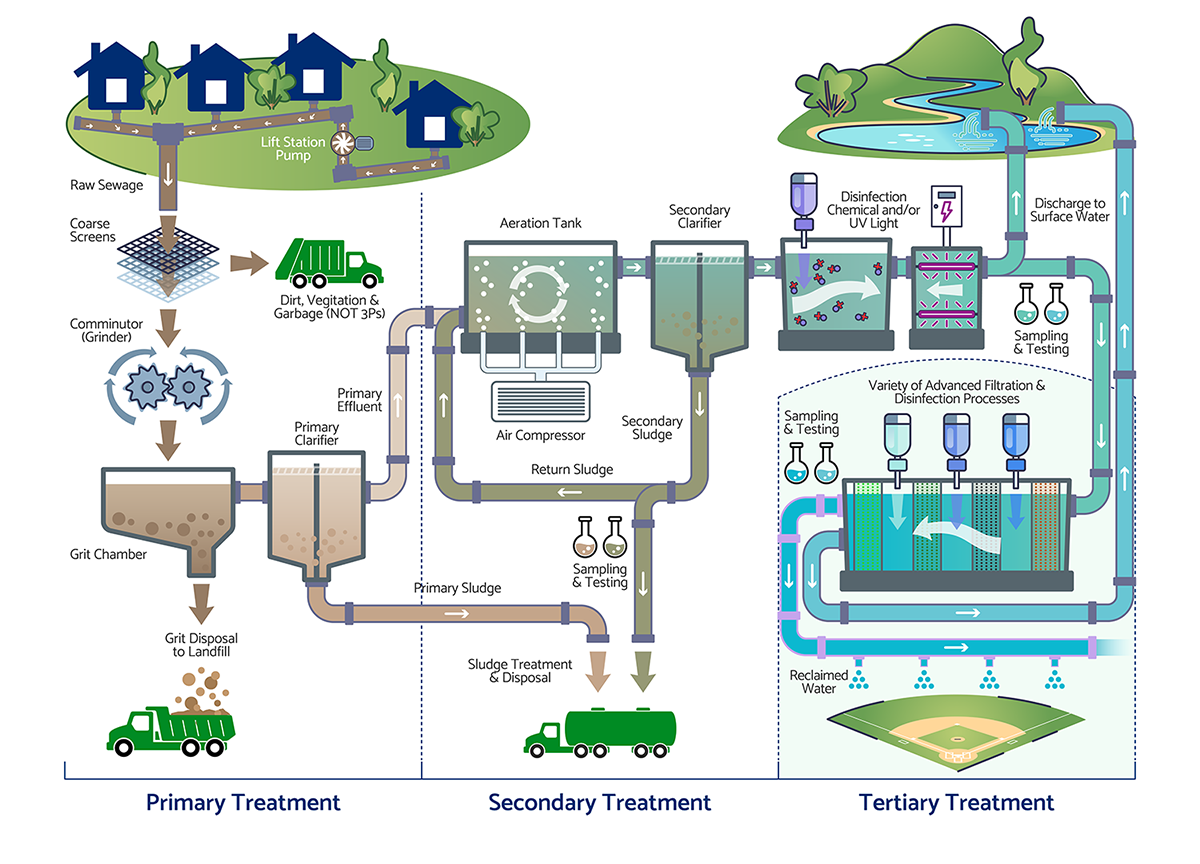What You Need to Know About Wastewater System Installations
What You Need to Know About Wastewater System Installations
Blog Article
Explore the Various Sorts Of Wastewater System Suitable for Diverse Demands
The exploration of wastewater systems reveals a range of solutions customized to meet diverse environmental and functional needs. Centralized therapy systems serve city centers successfully, while decentralized options offer country neighborhoods with lasting choices. Industrial applications require specialized methods, concentrating on pre-treatment and recycling. In addition, the rise of innovative modern technologies, such as membrane bioreactors, mean a transformative change toward resource effectiveness. Understanding these varied systems not just highlights their specific advantages yet also increases concerns concerning their long-term implications for sustainability and facilities strength. What, after that, are the most pressing difficulties and chances within this advancing landscape?
Overview of Wastewater Solution
Wastewater systems play an essential duty in managing the water that is used and discarded by houses, districts, and sectors. These systems are developed to collect, deal with, and discharge wastewater safely, making sure environmental management and public wellness. The complexity of wastewater systems arises from the varied sources of wastewater, which can consist of residential sewage, commercial effluents, and stormwater overflow.
The fundamental parts of wastewater systems consist of collection networks, treatment centers, and disposal approaches. Collection networks include pipes and pumping terminals that move wastewater from its source to treatment centers. Treatment centers then refine the wastewater with physical, chemical, and organic techniques to remove impurities before it is released back into the environment or recycled for various applications.
The layout and operation of wastewater systems have to think about variables such as population thickness, regulative needs, and environmental impact. Furthermore, developments in technology are bring about the development of a lot more sustainable and effective wastewater monitoring practices. On the whole, reliable wastewater systems are vital for keeping water quality, saving water sources, and promoting public health and wellness in areas worldwide.

Centralized Therapy Equipments
Central treatment systems are important components of modern wastewater monitoring, properly managing big volumes of wastewater created by city populations and commercial activities. These systems usually contain a network of collection pipelines, therapy plants, and discharge outlets, made to deal with wastewater before it is released back right into the atmosphere.
Centralized systems are most ideal for densely inhabited areas where the focus of wastewater necessitates a large reaction. The main benefit of such systems is their ability to give uniform therapy criteria, making sure that effluent fulfills regulative needs before discharge. Additionally, centralized treatment facilities usually integrate advanced modern technologies, such as organic treatment procedures, filtration, and sanitation approaches, improving the quality of treated water.
Operational performance is one more key benefit, as economic situations of scale permit decreased per-unit therapy costs compared to decentralized choices - Wastewater System. Central systems also encounter obstacles, consisting of the requirement for considerable infrastructure investment, possible ecological effects from big discharge volumes, and susceptability to system failings that can interrupt service for whole areas.
Decentralized Treatment Choices
Decentralized treatment alternatives supply a adaptable and lasting alternative to systematized systems, specifically in rural or less largely inhabited areas. These systems are designed to deal with wastewater near to the source of generation, minimizing the demand for extensive piping infrastructure and minimizing transport costs. Typical decentralized innovations consist of septic tanks, built wetlands, and aerated shallows, each customized to satisfy particular regional problems and therapy needs.
Septic systems, as an example, are extensively used for private households, effectively separating solids and fluids while enabling all-natural filtering via the dirt. Built wetlands imitate natural procedures, supplying reliable therapy with vegetation and microbial activity, making them an eco-friendly option. Aerated shallows use oygenation to promote microbial degradation of raw material, ideal for bigger communities or collections of homes.
Decentralized systems also supply durability versus infrastructure failures usually related to central systems, allowing communities to preserve wastewater monitoring also during unfavorable problems. In addition, they can be integrated with water reuse methods, advertising sustainability and reducing freshwater need. Hence, decentralized therapy options provide a feasible remedy for varied wastewater monitoring requires, boosting environmental management and area health.
Industrial Wastewater Solutions
Efficient monitoring of commercial wastewater is essential for minimizing the ecological influence of ensuring and manufacturing processes compliance with regulatory criteria. Industries create differing sorts of wastewater, usually having hazardous chemicals, heavy metals, and organic toxins, requiring tailored therapy options.
One typical strategy to commercial wastewater administration involves pre-treatment processes, which may consist of sedimentation, screening, and neutralization to eliminate large solids and readjust pH degrees. Complying with pre-treatment, organic therapy techniques such as activated sludge or biofilm activators can successfully minimize organic content and nutrients. For particular industries, progressed oxidation or membrane purification strategies may be employed to resolve a lot more intricate pollutants.

Conformity with neighborhood, state, and government laws is paramount throughout this process. Regular monitoring see this here and reporting are important to make sure that therapy systems run effectively and satisfy the called for criteria. In recap, critical preparation and durable therapy technologies are vital in taking care of commercial wastewater successfully, protecting both the environment and public health.
Ingenious and sustainable Technologies
Advancements in innovative and lasting modern technologies are official website reshaping the landscape of wastewater management, structure upon the foundational practices developed in commercial wastewater options. Emerging approaches such as membrane layer bioreactors (MBRs) and progressed oxidation procedures are boosting treatment performance while decreasing environmental influence. MBRs incorporate biological therapy and membrane filtering, permitting the efficient removal of contaminants and producing premium effluent ideal for different reuse applications.
Additionally, the assimilation of wise modern technologies, including Net of Things (IoT) sensing units and expert system, makes it possible for real-time tracking and optimization of wastewater therapy procedures. These developments assist in positive monitoring, lowering functional expenses and power intake. Moreover, the adoption of decentralized wastewater therapy systems empowers neighborhoods to handle their resources effectively, advertising sustainability at the neighborhood level.
Additionally, making use of biotechnological methods, such as microbial gas cells, not only deals with wastewater yet also generates renewable resource. These modern technologies underscore the shift towards a circular economy, where wastewater is deemed a source instead of a liability. By welcoming these cutting-edge and lasting technologies, the wastewater sector can substantially add to environmental security and strength against future difficulties.
Conclusion
In recap, wastewater systems encompass a range of remedies tailored to fulfill unique needs throughout metropolitan, country, and commercial contexts. Jointly, these diverse systems play a crucial duty in effective wastewater monitoring and ecological defense.
The intricacy of wastewater systems develops from the varied sources of wastewater, which can include residential sewage, industrial effluents, and stormwater drainage.
The you could look here fundamental elements of wastewater systems consist of collection networks, treatment facilities, and disposal methods (Wastewater System).Decentralized systems also provide durability against facilities failures usually connected with central systems, allowing communities to keep wastewater monitoring even throughout negative problems.Advancements in lasting and cutting-edge modern technologies are improving the landscape of wastewater monitoring, structure upon the fundamental practices established in industrial wastewater solutions. The adoption of decentralized wastewater therapy systems equips communities to handle their sources effectively, promoting sustainability at the local level
Report this page